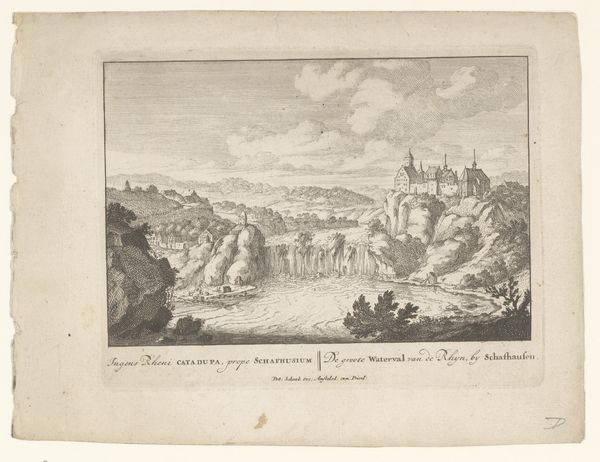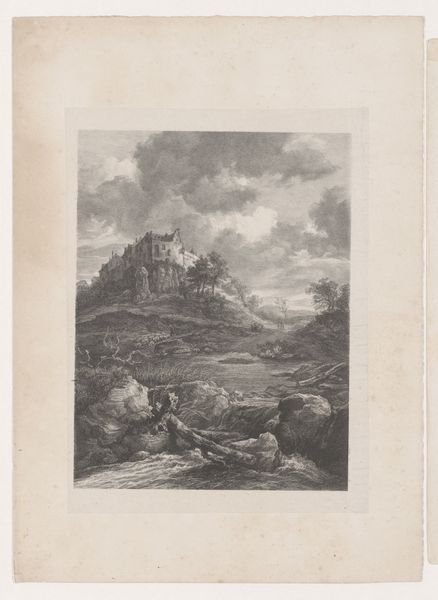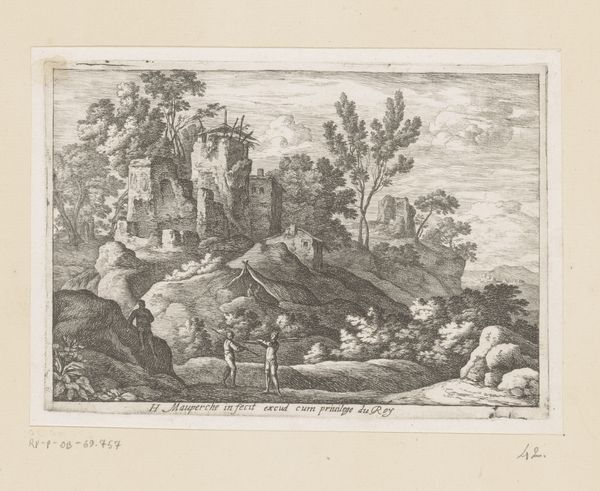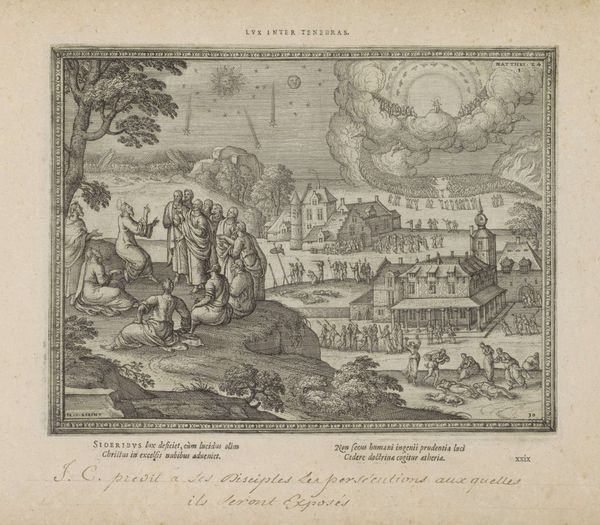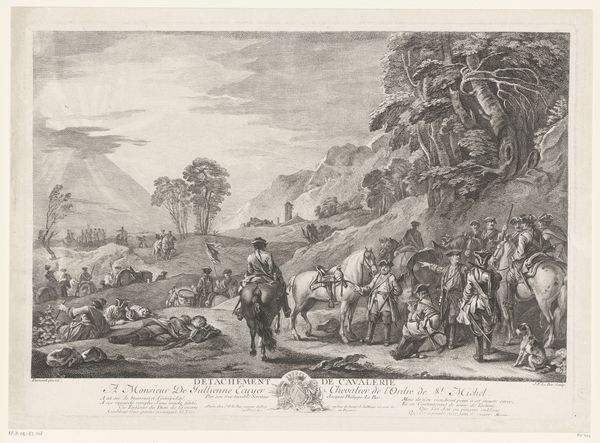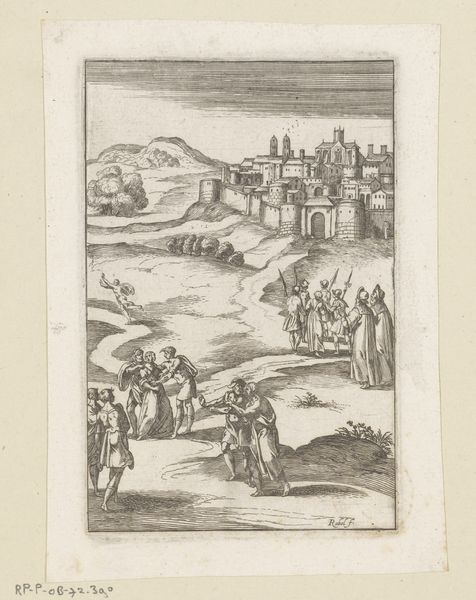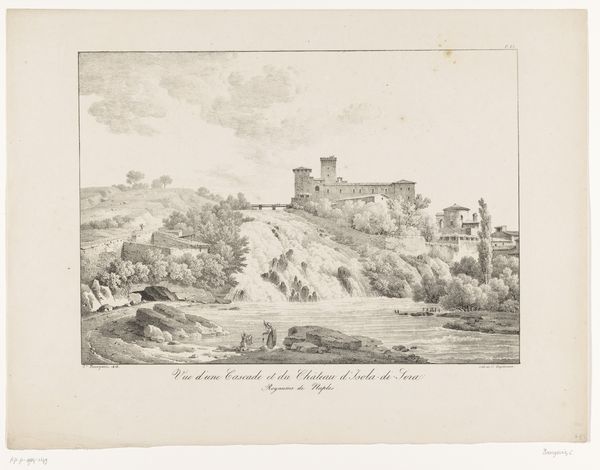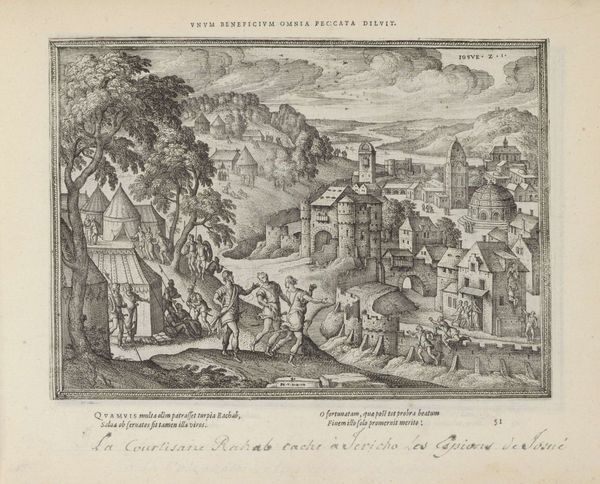
Dimensions: height 200 mm, width 154 mm
Copyright: Rijks Museum: Open Domain
Curator: I see ghosts here. Ruins in the foreground, shadows lengthening...there's a wistful melancholia to the whole scene. What leaps out at you? Editor: Melancholia indeed. This is a print titled "Ruins on the Island of Sao Tomé," dating back to 1784. Created by Dirk de Jong, it offers us a glimpse into a fraught history, depicting precisely that: the ruins, perhaps of colonial ambition. Curator: Colonial ambition... that feels like a soft way of putting it. Look at the cluster of figures there, some armed, overseeing, perhaps? There's a stark contrast with that lonely, whitewashed chapel perched precariously atop the hill. Editor: Exactly. That chapel isn't just a picturesque detail. Consider Sao Tomé's history – its central role in the transatlantic slave trade. These ruins whisper of exploitation and violence. The print implicates the church, crowning an idyllic landscape. Curator: So, the supposed beacon of hope overlooking a landscape scarred by brutality. The composition itself seems to be setting up this uneasy juxtaposition. And the almost theatrical clouds – dramatic, but casting long shadows. Editor: The Romantic sensibility at play here cannot be separated from its historical context. It highlights power dynamics through landscape. A closer look shows armed figures possibly inspecting enslaved people, subtly inserted into the "ruins." This wasn't paradise lost, but paradise stolen. Curator: Stealing and erasure... It hits different when you see it laid bare. I mean, I knew it, but there's something in the depiction, the almost careless way the exploitation is just part of the view, like, ruins on an island is business as usual... That’s bleak. Editor: Indeed. It prompts us to consider the ways in which histories of colonialism and slavery are embedded in the land, shaping our present. We are, even now, constantly negotiating these images that subtly perpetuate biased systems. Curator: Bleak then and, well, prompting now. The picture felt elegiac, and it still does in a way. But there’s anger in it, and grief, maybe it wasn't just shadows I felt there. Editor: I think that reading rings true. We bring our contemporary consciousness to these historical artifacts. Perhaps de Jong wasn't so different, quietly, cleverly encoding a potent perspective into this ruined landscape.
Comments
No comments
Be the first to comment and join the conversation on the ultimate creative platform.
